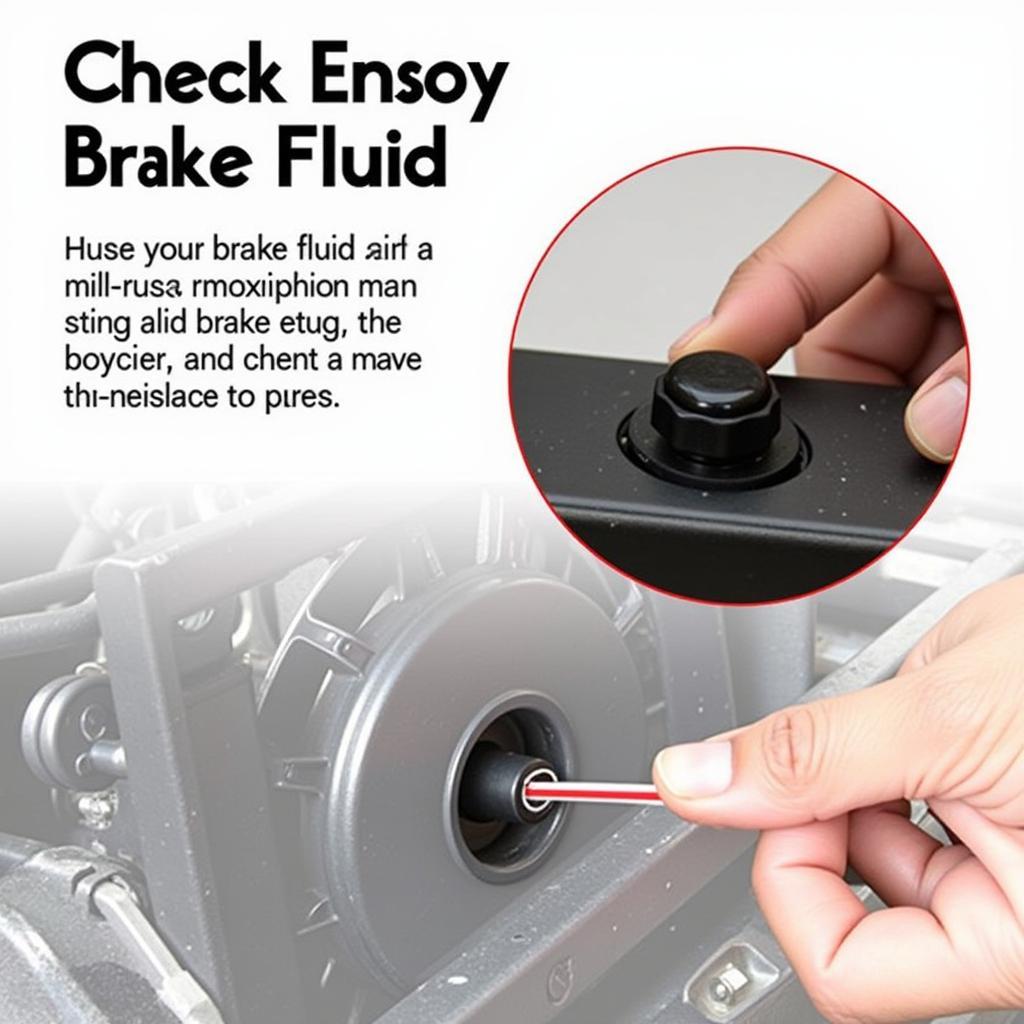While driving you notice the brake warning lamp is on. This can be a jarring experience, leaving you wondering what’s wrong and what to do next. Don’t panic! This article will guide you through the possible causes, troubleshooting steps, and solutions when your brake warning light illuminates while driving. We’ll cover everything from simple checks to more complex issues, empowering you to understand and address this potentially serious problem.
Understanding Your Brake Warning Light
The brake warning light is a crucial part of your vehicle’s safety system. It’s designed to alert you to potential problems within the braking system, ranging from low brake fluid to more serious mechanical failures. Ignoring this warning can lead to dangerous driving conditions and costly repairs. Understanding what triggers this light is the first step towards resolving the issue.
Common Causes of an Illuminated Brake Warning Light
There are several reasons why your brake warning light might come on while driving. Some of the most common culprits include:
- Low Brake Fluid: This is the most frequent cause. A leak in the brake lines or worn brake pads can deplete your brake fluid, triggering the warning light.
- Parking Brake Engaged: Sometimes, the simplest explanation is the right one. Double-check to ensure your parking brake is fully released.
- Faulty Brake Light Switch: This switch activates your brake lights and also plays a role in the brake warning system. A malfunctioning switch can cause the light to illuminate.
- Worn Brake Pads: Brake pads have wear indicators that trigger the warning light when they reach a certain level of wear. Replacing your brake pads will usually resolve this issue.
- ABS Issues: If your car has an Anti-lock Braking System (ABS), a problem with this system can trigger the warning light. This could indicate a faulty sensor or a problem with the ABS module.
 Checking Brake Fluid Reservoir Level
Checking Brake Fluid Reservoir Level
Troubleshooting the Brake Warning Light
If you notice the brake warning lamp is on while driving, it’s important to take action immediately. Here are some steps you can take to troubleshoot the problem:
- Check the Parking Brake: The first thing to do is ensure your parking brake is fully disengaged. This might seem obvious, but it’s a surprisingly common oversight.
- Inspect the Brake Fluid Level: Locate the brake fluid reservoir under the hood and check the fluid level. If it’s low, add brake fluid to the recommended level. However, consistently low brake fluid indicates a leak, which requires professional attention.
- Check Brake Lights: Have someone help you verify that all your brake lights are functioning correctly. If not, this could point to a faulty brake light switch. What is an anti-theft device might also be a topic you’re interested in when talking about safety.
- Listen for Unusual Noises: Pay attention to any unusual noises coming from your brakes, such as grinding or squealing. These sounds can indicate worn brake pads or other mechanical issues.
“A visual inspection of the brake system can often reveal obvious issues like leaking brake lines or excessively worn brake pads,” says automotive expert, John Miller, ASE Certified Master Technician. “However, diagnosing more complex problems, such as ABS issues, requires specialized diagnostic equipment.”
Seeking Professional Help
While some brake issues can be addressed with simple DIY fixes, others require the expertise of a qualified mechanic. If you’re unsure about the cause of your brake warning light or if the problem persists after basic troubleshooting, it’s crucial to seek professional help. Ignoring a persistent brake warning light can lead to dangerous driving conditions and potentially costly repairs down the road.
When to Contact a Mechanic
- If you suspect a brake fluid leak.
- If your brake pedal feels spongy or unresponsive.
- If you hear grinding or squealing noises when braking.
- If you’ve tried basic troubleshooting steps and the warning light remains on. Is the club still a good anti-theft device can also be helpful in protecting your car.
“Modern vehicles often utilize complex electronic brake systems, which require specialized diagnostic tools and knowledge to repair,” adds Miller. “Attempting to repair these systems without proper training and equipment can lead to further damage and potentially compromise your safety.” Consider also if is the club a good anti-theft device.
Conclusion
Noticing the brake warning lamp is on while driving can be concerning, but understanding the potential causes and taking appropriate action can help you address the issue effectively. From checking your parking brake and fluid levels to seeking professional help when needed, proactive steps can ensure your safety and prevent further damage to your vehicle. Don’t ignore this vital warning—address it promptly and keep your brakes in optimal condition. What is the best anti theft steering wheel lock might be a good idea too for security. How tomake a good steering wheel anti theft lock is a topic worth exploring.
